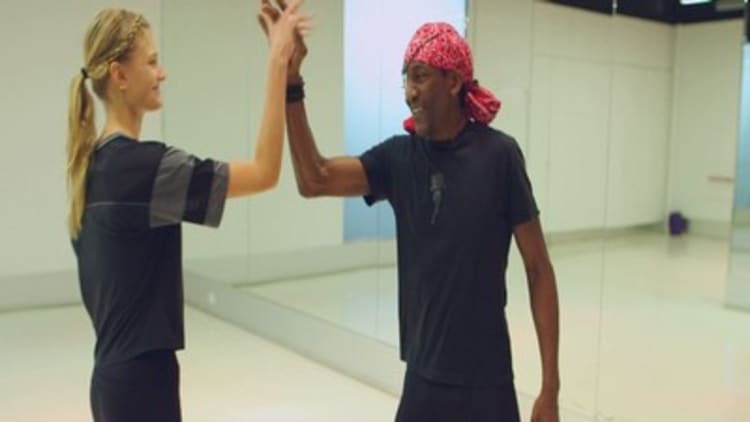Consistent sales growth over the past 24 quarters. A greater-than-50 percent increase in revenues over that six-year time span. Nearly 3,000 stores in operation, 99 percent of which are cash-flow positive.
These metrics, being posted by Victoria's Secret parent company L Brands, have created quite an enviable scoreboard in the retail industry, which has been broadly plagued by discounts and muted sales growth.
But the performance hasn't gone unnoticed. Shares of L Brands last week reached an all-time high of more than $100, before retreating back toward $93 on Wednesday. Despite the pullback, the specialty store's stock is up more than 20 percent over the past year, reaping a price more than 24 times higher than its earnings.
For some analysts, that's just too expensive for a company that's so well established. On Monday, JP Morgan analyst Matthew Boss downgraded shares of L Brands to "neutral" from "overweight," citing the stock's run-up and increased promotions at the mall.
"I can't say anything negative about the business," said Stifel Nicolaus analyst Richard Jaffe, who also has a "hold" rating on its shares. "But I'm hard-pressed, given the relatively modest growth prospects, to want to buy the stock here."
Despite its maturity in the U.S. market, L Brands still has several levers to pull in its pursuit for growth. These include blowing out Victoria's Secret's domestic stores so they can carry the label's full assortments. Right now, 800 of its roughly 1,200 stores do not carry its full lingerie assortment, and 550 do not offer the full assortment for its younger-facing PINK brand.
Victoria's Secret, whose domestic sales account for roughly two-thirds of L Brands' annual revenues, is also eyeing growth overseas, where it will have roughly 400 shops by the end of the year, and plans to open about 100 more in 2016.
"The international expansion opportunity is pretty significant," said Guggenheim Securities analyst Howard Tubin, who has a "buy" rating and $110 price target on the firm.
The majority of Victoria's Secret's international fleet is made up of its beauty and accessories shops, 1,000-square-foot locations that are operated by franchisees and don't sell its lingerie assortment.
But with brand recognition across the world due to the annual fashion show, which filmed Tuesday and will be shown in 185 countries, Tubin said the company is just "teasing" these markets.
This affords it the opportunity to go into multiple markets with its full assortment over the next decade or so, Tubin said.
But investors shouldn't expect L Brands to rush. With the company focused on store expansion in the U.S., growing Bath & Body Works' White Barn Candle Co. store concept, and expanding its sport business, "They're keeping plenty busy," Jaffe said.
It also has opportunities in its core competencies, bras and panties. The retailer is entering the critical holiday season with solid momentum — it raised its third-quarter earnings guidance last week — and will for the first time launch a new bra in December.
Though Tubin said the biggest challenge to Victoria's Secret's business is its ability to continue generating fashions that resonate with shoppers, he said it isn't as susceptible to style misses as the broader apparel market.
"If you're an apparel retailer, there's a lot of you," he said.
Whereas a consumer who didn't find what she was looking for at a specialty apparel shop would likely visit a competitor, that's less likely to happen to Victoria's Secret, which controls such a large piece of the market. According to IBISWorld, Victoria's Secret has a hold on 62 percent of the $9 billion lingerie stores market.
"It's their business to lose," Tubin said.

Though several new names have appeared among Victoria's Secret's competitive set — among them, online retailer Adore Me and New York City-based Journelle — the brand has a "wide, deep moat" around its business, Jaffe said.
That's because other large players in the industry cater to a different audience. Chico's-owned Sonoma, for instance, targets an older customer, whereas Lane Bryant's Cacique is focused on plus-size shoppers.
Tubin added that Victoria's Secret has faced new players before. About a decade ago, a number of specialty shops and department stores tried to capture a piece of the market, but it never really materialized, he said.
"There's a technical expertise needed to make this stuff," Tubin said. "It's not just like making a T-shirt. There's fit concerns and there's strapping technologies."
What's more, as the largest player in the space, Victoria's Secret has the necessary factory relationships to produce items relatively quickly and inexpensively.
Overall, both Tubin and Jaffe agreed that what's made Victoria's Secret such a powerhouse is its ability to turn what used to be a commodity product into a fashion product.
But Jaffe said that doesn't mean the specialty store deserves to be valued like a consumer staples company, which tend to be less susceptible to economic or fashion swings.
"The fundamentals are so excellent," Jaffe said. "I just question what price you pay for this modest growth."





